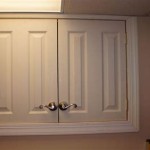36 Inch Interior Door Rough Opening Size Chart: A Comprehensive Guide
When undertaking home renovations or new construction, accurately framing door openings is paramount for a smooth and efficient installation process. Miscalculations in the rough opening can lead to delays, increased costs, and aesthetic problems. The rough opening serves as the framed space within a wall where the door unit will eventually be installed. This article focuses specifically on the required rough opening dimensions for a standard 36-inch interior door, providing a comprehensive guide and size chart to ensure precision in your projects.
The nominal door size, in this case, 36 inches, refers to the door slab itself, not the total dimensions of the door frame or the rough opening required for installation. The rough opening must be larger than the nominal door size to accommodate the door frame, shims for adjustments, and any necessary clearances. Failing to account for these factors can result in a door that doesn't fit properly or operate smoothly.
Understanding the Importance of Accurate Rough Openings
Accuracy in creating the rough opening is crucial for several reasons. Firstly, an undersized rough opening will necessitate structural alterations to the existing framing, which can be time-consuming, expensive, and potentially compromise the wall's integrity. Trying to force a door frame into a space that is too small can also lead to warping or damage to the frame itself.
Conversely, an oversized rough opening can create challenges in securing the door frame properly. While shims can be used to fill the gaps, excessive shimming can make the frame feel less stable and may require additional reinforcement. Too much shimming can also lead to aesthetic issues, making the installation appear less professional.
Proper rough opening dimensions allow for a seamless integration of the door unit, ensuring that the door swings freely, latches securely, and provides a visually appealing finish. It also minimizes the need for extensive adjustments during the installation process, saving time and labor costs.
Standard Rough Opening Dimensions for a 36-Inch Interior Door
The standard rough opening for a 36-inch interior door is typically 38 inches wide and 82 inches high. This accounts for the door slab, the door frame, and the space required for shimming and adjustments. However, it is critical to verify the frame dimensions with the specific door unit you intend to install. Manufacturers may have slight variations in their frame sizes, and relying solely on the standard dimensions could lead to errors.
Here is a detailed breakdown of the components contributing to the overall rough opening size:
- Door Slab Width: 36 inches (nominal size)
- Standard Door Frame Width:** About 1 ¼ to 1 ½ inches per side (2 ½ to 3 inches total)
- Height: 80-inch door slab + 1 ½ to 2 inches for the frame + ½ to 1 inch for floor clearance.
- Shimming Allowance: ½ inch on each side and top (1 inch total width and height).
Considering these factors, the following chart provides a clear visual representation of the recommended rough opening dimensions:
36 Inch Interior Door Rough Opening Size Chart
| Door Slab Size | Door Frame Thickness (Approximate) | Recommended Rough Opening Width | Recommended Rough Opening Height (for 80-inch door) |
|---|---|---|---|
| 36 inches | 2 ½ - 3 inches (total) | 38 inches | 82 inches |
The table above provides a general guideline. Always refer to the manufacturer's specifications for the exact rough opening dimensions required for your specific door unit.
Factors Influencing Rough Opening Size
While the standard rough opening dimensions provide a good starting point, several factors can influence the actual size required. It is essential to consider these factors before framing the opening to avoid potential issues during installation.
1. Door Frame Material and Thickness: The material of the door frame can affect its thickness and required clearance. Wood frames, for example, may require slightly different clearances than steel or composite frames. The thickness of the frame itself contributes directly to the overall rough opening size. Always check the manufacturer's specifications for the exact frame dimensions.
2. Flooring Type and Thickness: The type and thickness of the flooring material will impact the required height of the rough opening. If you are installing new flooring after the door frame is in place, you need to account for the added thickness of the flooring to ensure that the door can swing freely without rubbing against the floor. In some cases, you may need to increase the height of the rough opening slightly to accommodate thicker flooring materials.
3. Inswing vs. Outswing Doors: The direction in which the door swings (inward or outward) can influence the required clearances. Inswing doors may require slightly more clearance at the bottom to allow the door to swing over carpeting or rugs. Outswing doors may need consideration for exterior weather stripping or threshold requirements.
4. Hardware Considerations: The type of hardware being used, such as hinges and handles, can also impact the rough opening size. Larger or more elaborate hinges may require additional clearance, while specific handle designs may necessitate adjustments to the door frame or the rough opening itself.
5. Pre-Hung vs. Slab Doors: Pre-hung doors come already mounted within a frame, which simplifies installation but requires precise measurements of the entire unit. Slab doors, on the other hand, are just the door itself, and you will need to build or purchase a separate frame. Pre-hung doors dictate the exact rough opening, while slab doors allow for more flexibility in frame construction but require careful attention to frame dimensions.
6. Jamb Thickness: Jamb thickness, typically ranging from 4 5/8 inches to 6 5/8 inches, will impact the overall depth of the rough opening you need to create. Ensure the wall depth accommodates the selected jamb thickness to maintain a flush finish.
Step-by-Step Guide to Measuring and Creating the Rough Opening
Accurately measuring and creating the rough opening is crucial for a successful door installation. Follow these steps to ensure precision and avoid common mistakes:
Step 1: Obtain Manufacturer's Specifications: The first and most important step is to obtain the manufacturer's specifications for the specific door unit you are planning to install. These specifications will provide the exact rough opening dimensions required for that particular door. Do not rely solely on standard dimensions, as variations can occur between manufacturers.
Step 2: Measure the Existing Opening (for Renovations): If you are replacing an existing door, carefully measure the existing rough opening. Note any irregularities or inconsistencies in the framing. Compare these measurements to the manufacturer's specifications to determine if any adjustments are necessary.
Step 3: Determine the Required Width: Add the door slab width (36 inches) to the total frame width (typically 2 ½ - 3 inches) and the desired shimming allowance (approximately 1 inch). This calculation will provide the recommended rough opening width. Ensure that this measurement aligns with the manufacturer's specifications.
Step 4: Determine the Required Height: Add the door slab height (typically 80 inches) to the frame height (approximately 1 ½ to 2 inches), the desired floor clearance (typically ½ to 1 inch), and the shimming allowance (approximately ½ to 1 inch). This calculation will provide the recommended rough opening height. Again, compare this measurement to the manufacturer's specifications.
Step 5: Frame the Opening: Construct the rough opening using appropriate lumber and framing techniques. Ensure that the opening is square and plumb. Use a level and a square to verify that the framing is accurate. Securely fasten the framing members to the surrounding wall structure.
Step 6: Verify the Dimensions: After framing the opening, double-check all dimensions to ensure that they match the manufacturer's specifications. Use a tape measure and a level to verify the width, height, and squareness of the opening. Make any necessary adjustments before proceeding with the door installation.
Step 7: Account for Flooring: Remember to factor in the thickness of any planned flooring. If you are installing new flooring after the door frame is in place, leave adequate space at the bottom of the rough opening to accommodate the flooring thickness. You may need to raise the height of the rough opening slightly to ensure that the door can swing freely over the flooring.
Step 8: Shimming: During door installation, shims are crucial for creating level and plumb surfaces. Strategically placing shims in the rough opening ensures the doorframe is securely fastened and functions optimally. Shims are thin, tapered pieces of wood used to fill gaps between the doorframe and the rough opening, ensuring the door is properly aligned before being permanently secured. Consider using cedar shims that allow for less chance of rot and decay.
By following these steps and carefully considering all relevant factors, you can create a rough opening that is perfectly sized for your 36-inch interior door, ensuring a smooth and professional installation.

Door Rough Opening Sizes And Charts Ez Hang

Rough Opening For Doors 24 28 30 32 36 Sizes Charts

Doors Measuring Rough Openings Builders Surplus

Rough Openings For 36 Inch Door Dimensions Installation

Door Rough Opening Sizes And Charts Guide For Interior Exterior Doors Wiki

How To Measure Hollow Metal Door Rough Openings Learn More

What Size Door Do I Need Guide Charts

How To Measure A Rough Opening For Doors Complete Guide Pros

Frame A Door Rough Opening Fine Homebuilding

Exterior Door Rough Openings Builders Surplus
Related Posts








